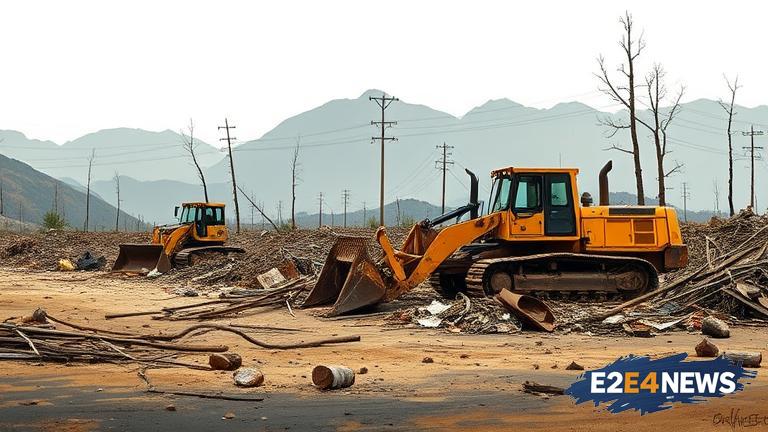The California wildfires that ravaged the state six months ago have left a trail of destruction, with thousands of properties reduced to ashes. The debris removal efforts, led by the California Department of Resources Recycling and Recovery (CalRecycle), have been ongoing, with a focus on clearing hazardous materials and rebuilding affected communities. As of now, over 90% of the debris has been removed, with thousands of tons of ash, metal, and concrete cleared from the affected areas. The process has been slow and laborious, with crews working tirelessly to remove the debris, often in challenging terrain and weather conditions. Despite the progress, many challenges persist, including the presence of toxic substances, such as lead and asbestos, which require specialized handling and disposal. The state has implemented strict protocols to ensure the safe removal and disposal of these hazardous materials. The debris removal efforts have also been hindered by the sheer scale of the destruction, with thousands of properties affected, and the need for careful documentation and verification of property ownership. The state has established a system to track and verify the removal of debris, to ensure that all properties are cleared and rebuilt. The rebuilding efforts are also underway, with many homeowners and businesses working to restore their properties. The state has provided financial assistance and resources to support the rebuilding efforts, including low-interest loans and grants. However, many residents are still struggling to recover, with some facing significant delays and bureaucratic hurdles. The state has acknowledged these challenges and is working to streamline the process, to ensure that all residents receive the support they need. The wildfires have also had a significant impact on the environment, with thousands of acres of land burned, and many wildlife habitats destroyed. The state is working to restore these habitats, and to prevent future wildfires, through a range of measures, including forest management and fire prevention programs. The debris removal efforts have also highlighted the need for sustainable waste management practices, to reduce the risk of future wildfires and minimize the environmental impact of debris disposal. The state is exploring new technologies and strategies, such as recycling and composting, to reduce waste and promote sustainability. In addition, the state is working to support affected communities, through a range of programs and services, including mental health support, housing assistance, and economic development initiatives. The wildfires have also had a significant impact on the state’s economy, with many businesses affected, and thousands of jobs lost. The state is working to support economic recovery, through a range of initiatives, including business loans, tax incentives, and job training programs. Overall, the debris removal efforts in California are ongoing, with significant progress made, but challenges persist. The state is committed to supporting affected communities, and to rebuilding and restoring the affected areas, through a range of programs and initiatives. The recovery efforts will take time, but with the support of the state, and the resilience of the affected communities, California will rebuild and recover from these devastating wildfires. The state’s response to the wildfires has been widely praised, with many acknowledging the complexity and challenges of the debris removal efforts. The state’s commitment to sustainability, and its efforts to reduce waste and promote environmental protection, have also been recognized. As the state continues to rebuild and recover, it is clear that the debris removal efforts will be an ongoing process, requiring careful planning, coordination, and execution. The state will need to continue to work with affected communities, to ensure that all residents receive the support they need, and that the rebuilding efforts are successful. The debris removal efforts will also require ongoing funding and resources, to ensure that the state can continue to support the recovery efforts. The state’s budget for the debris removal efforts has been significant, with hundreds of millions of dollars allocated to support the recovery efforts. The state has also received funding and support from the federal government, to support the debris removal efforts. The debris removal efforts have also highlighted the need for disaster preparedness, and the importance of having plans and protocols in place, to respond to future disasters. The state is working to develop and implement new disaster preparedness plans, to ensure that it is better prepared to respond to future wildfires and other disasters. The state’s experience with the debris removal efforts will inform its approach to disaster preparedness, and will help to ensure that it is better equipped to respond to future disasters. The debris removal efforts have been a significant challenge for the state, but they have also provided an opportunity for the state to rebuild and recover, and to develop new strategies and approaches, to reduce the risk of future wildfires and promote sustainability.
